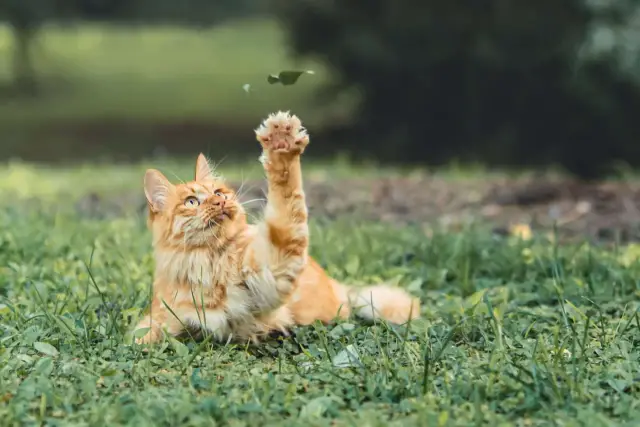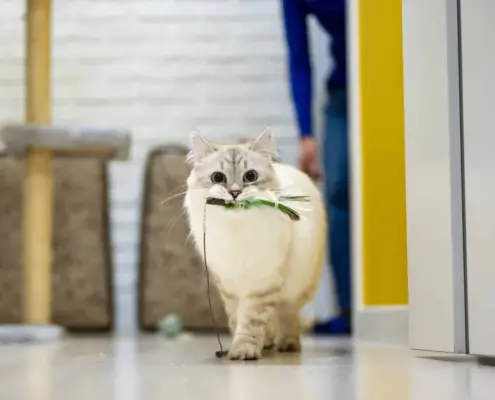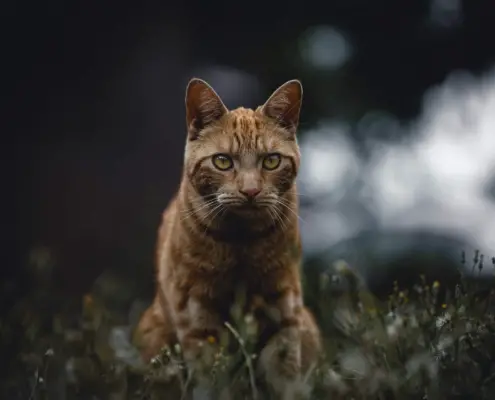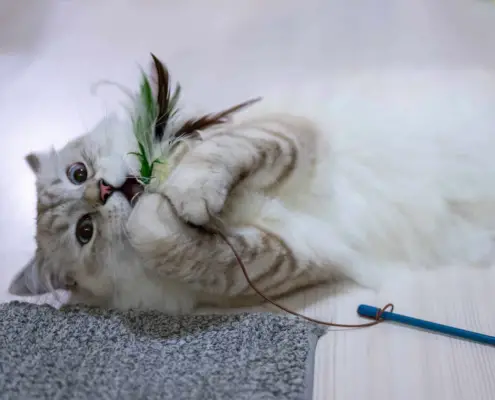
Cats have always been enigmatic creatures, captivating us with their mysterious behaviors. One such behavior that often leaves cat owners puzzled is their tendency to slap. It’s not uncommon to witness a cat’s paw swiftly moving through the air, seemingly aiming for an invisible target. But why do cats like to slap? In this article, we will delve into the fascinating world of our feline friends and explore the reasons behind this behavior.
The instinctual nature of cats
To understand why cats engage in slapping, we must first recognize their instinctual nature. Cats are natural hunters, and their paws are designed with sharp claws that enable them to catch and hold onto prey. Slapping is an extension of this innate hunting behavior. When a cat slaps, it’s mimicking the motion of swatting at prey, honing its hunting skills even in the absence of actual prey.
Understanding territorial behavior in cats
Another aspect that contributes to cat slapping is their territorial nature. Cats are highly territorial animals and use various methods to mark and defend their territory. Slapping can be a way for cats to establish boundaries and communicate their dominance. By slapping, cats are warning intruders or other animals to stay away from their territory. It serves as a visual and physical deterrent, showcasing their authority and defending what they consider to be their domain.
Exploring the role of play in cat slapping
While slapping can have territorial undertones, it’s important to note that cats also engage in this behavior during play. Play is an essential part of a cat’s development and serves multiple purposes, including honing their hunting skills, exercising, and relieving stress. When cats play, they often mimic hunting behaviors, and slapping can be a playful way for them to practice their hunting techniques. It allows them to simulate catching prey and provides an outlet for their natural instincts.
The communication aspect of cat slapping
Beyond hunting and play, cat slapping also has a communication aspect. Cats are known for their subtle ways of communication, and slapping can be one such method. When a cat slaps another cat or even a human, it’s conveying a message. It could be a sign of displeasure, a warning to back off, or an attempt to assert dominance. Understanding the context and body language accompanying the slapping behavior is crucial in deciphering the message being conveyed.
Factors that may trigger cat slapping
Various factors can trigger a cat to engage in slapping behavior. One common trigger is fear or feeling threatened. If a cat perceives a situation or individual as a threat, it may resort to slapping as a defensive mechanism. Other triggers can include pain or discomfort, territorial disputes with other cats, or feeling cornered and unable to escape. Recognizing these triggers can help prevent potential slapping incidents and ensure a harmonious environment for both cats and their human companions.
How to respond to cat slapping
When faced with a slapping cat, it’s essential to respond appropriately to avoid escalating the situation. Reacting with aggression or punishment can exacerbate the behavior and damage the trust between you and your feline companion. Instead, remain calm and give the cat space. Assess the situation to identify the potential trigger and address it accordingly. If the slapping persists or becomes aggressive, consulting with a veterinarian or a professional animal behaviorist can provide valuable insights and guidance.
Tips for preventing cat slapping
Prevention is key when it comes to cat slapping. By creating a cat-friendly environment and understanding their needs, we can minimize the occurrence of slapping behavior. Providing ample resources such as scratching posts, toys, and perches can help redirect their energy and fulfill their natural instincts. Additionally, ensuring that cats have enough personal space and territory can reduce the likelihood of territorial disputes that may lead to slapping. Regular play sessions and positive reinforcement training can also help channel their energy in a constructive way.
Common misconceptions about cat slapping
There are several misconceptions surrounding cat slapping that need to be debunked. One common misconception is that cats slap out of spite or vindictiveness. In reality, cats do not possess the same complex emotions as humans, and their actions are driven by instinct and communication. Another misconception is that slapping is an inherently aggressive behavior. While it can be a form of aggression in certain circumstances, it is not always indicative of hostility. Understanding the underlying reasons for slapping can help dispel these misconceptions and foster a deeper understanding of our feline friends.
Embracing and understanding our feline friends’ behavior
In conclusion, cat slapping is a complex behavior rooted in a cat’s instinctual nature, territorial instincts, and communication methods. It serves various purposes, including hunting practice, territorial defense, and communication of emotions and boundaries. By embracing and understanding this behavior, we can better cater to our feline friends’ needs and create a harmonious environment for both cats and humans. Remember, when confronted with a slapping cat, patience, observation, and appropriate responses are key to maintaining a strong bond with your furry companion.
If you enjoyed my article, I would appreciate you sharing it with your network.

Sima Ndlebe
Sima writes for CatBuzz. He is interested in Cats, Health and Fitness, and Entrepreneurship.
Published: 16 May 2024



